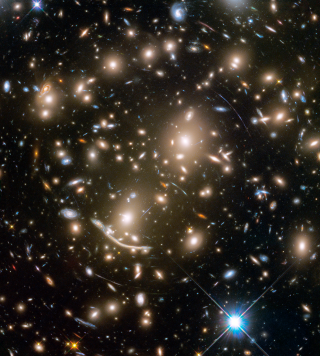Bibcode
Ziegler, B.; Zibetti, S.; Wisotzki, L.; Wild, V.; Vilchez, J. M.; Trager, S. C.; Stanishev, V.; Singh, R.; Spekkens, K.; Sánchez-Blázquez, P.; Roth, M. M.; Quirrenbach, A.; Puschnig, J.; Papaderos, P.; Meidt, S. E.; del Olmo, A.; Mollá, M.; Méndez-Abreu, J.; Márquez, I.; Mármol-Queraltó, E.; de Lorenzo-Cáceres, A.; López-Sánchez, Á. R.; Lehnert, M. D.; Klar, J.; Kennicutt, R. C.; Kehrig, C.; Kalinova, V.; Jungwiert, B.; Holmes, L.; Haines, T.; Gruel, N.; Gomes, J. M.; García-Lorenzo, B.; Gallazzi, A.; Galbany, L.; Flores, H.; Florido, E.; Enke, H.; Díaz, A. I.; Demleitner, M.; Dettmar, R.-J.; Cortijo, C.; Bland-Hawthorn, J.; Barrera-Ballesteros, J. K.; Backsmann, N.; de Amorim, A. L.; Alves, J.; Walcher, J.; van de Ven, G.; Schilling, U.; Ruiz-Lara, T.; Rosales-Ortega, F. F.; Pérez, I.; Pérez, E.; Gil de Paz, A.; Monreal-Ibero, A.; Miskolczi, A.; Mast, D.; Marino, R. A.; Lyubenova, M.; López-Fernandez, R.; Kupko, D.; Johnson, B. D.; Iglesias-Páramo, J.; González Delgado, R. M.; García-Benito, R.; Falcón-Barroso, J.; Cid Fernandes, R.; Catalán-Torrecilla, C.; Castillo-Morales, A.; Bomans, D. J.; Bekeraitė, S.; Barrado, D.; Sánchez, S. F.; Jahnke, K.; Husemann, B.
Bibliographical reference
Astronomy and Astrophysics, Volume 549, id.A87, 25 pp.
Advertised on:
1
2013
Journal
Citations
204
Refereed citations
187
Description
We present the first public data release (DR1) of the Calar Alto Legacy
Integral Field Area (CALIFA) survey. It consists of science-grade
optical datacubes for the first 100 of eventually 600 nearby (0.005 <
z < 0.03) galaxies, obtained with the integral-field spectrograph
PMAS/PPak mounted on the 3.5 m telescope at the Calar Alto observatory.
The galaxies in DR1 already cover a wide range of properties in
color-magnitude space, morphological type, stellar mass, and gas
ionization conditions. This offers the potential to tackle a variety of
open questions in galaxy evolution using spatially resolved
spectroscopy. Two different spectral setups are available for each
galaxy, (i) a low-resolution V500 setup covering the nominal wavelength
range 3745-7500 Å with a spectral resolution of 6.0 Å
(FWHM), and (ii) a medium-resolution V1200 setup covering the nominal
wavelength range 3650-4840 Å with a spectral resolution of 2.3
Å (FWHM). We present the characteristics and data structure of the
CALIFA datasets that should be taken into account for scientific
exploitation of the data, in particular the effects of vignetting, bad
pixels and spatially correlated noise. The data quality test for all 100
galaxies showed that we reach a median limiting continuum sensitivity of
1.0 × 10-18 erg s-1 cm-2
Å-1 arcsec-2 at 5635 Å and 2.2 ×
10-18 erg s-1 cm-2 Å-1
arcsec-2 at 4500 Å for the V500 and V1200 setup
respectively, which corresponds to limiting r and g band surface
brightnesses of 23.6 mag arcsec-2 and 23.4 mag
arcsec-2, or an unresolved emission-line flux detection limit
of roughly 1 × 10-17 erg s-1 cm-2
arcsec-2 and 0.6 × 10-17 erg s-1
cm-2 arcsec-2, respectively. The median spatial
resolution is 3farcs7, and the absolute spectrophotometric calibration
is better than 15% (1σ). We also describe the available interfaces
and tools that allow easy access to this first publicCALIFA data at
http://califa.caha.es/DR1.
Based on observations collected at the Centro Astronómico Hispano
Alemán (CAHA) at Calar Alto, operated jointly by the Max-
Planck-Institut für Astronomie (MPIA) and the Instituto de
Astrofísica de Andalucía (CSIC).
Related projects

Galaxy Evolution in Clusters of Galaxies
Galaxies in the universe can be located in different environments, some of them are isolated or in low density regions and they are usually called field galaxies. The others can be located in galaxy associations, going from loose groups to clusters or even superclusters of galaxies. One of the foremost challenges of the modern Astrophysics is to
Jairo
Méndez Abreu

Traces of Galaxy Formation: Stellar populations, Dynamics and Morphology
We are a large, diverse, and very active research group aiming to provide a comprehensive picture for the formation of galaxies in the Universe. Rooted in detailed stellar population analysis, we are constantly exploring and developing new tools and ideas to understand how galaxies came to be what we now observe.
Anna
Ferré Mateu